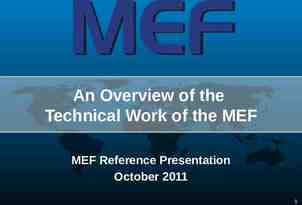studymafia Seminar On Disaster Management Submitted To:
41 Slides784.97 KB

www.studymafia.org Seminar On Disaster Management Submitted To: www.studymafia.org Submitted By: www.studymafia.org

Content What is disaster management ? Background Types of disaster Characteristic of disaster Phases of disaster Principles of disaster management Disaster impact Disaster recovery Future Directions References

What is disaster management ? “A disaster can be defined as any occurrence that cause damage, ecological disruption, loss of human life, deterioration of health and health services on a scale, sufficient to warrant an extraordinary response from outside the affected community or area”. (W.H.O.) “A disaster can be defined as an occurrence either nature or manmade that causes human suffering and creates human needs that victims cannot alleviate without assistance”. American Red Cross (ARC) ’

What is Disaster Management

What it involves ? Dealing with and avoiding both natural and man made disasters. Preparedness before disaster. Rebuilding and supporting society after natural disasters.

BACKGROUND Enormous population pressures and urbanization A flood, a drought or an earthquake millions of peoples are affected each time a disaster occurs Large-scale displacement and the loss of life, loss of property and agricultural crops

BACKGROUND The reasons for this are varied including: an increasing population pressures in urban areas an increase in the extent of encroachment into lands, e.g., river beds or drainage courses, low lying areas etc. poor lack or ignored zoning laws and policies of proper risk management (insurance)

DISASTER Natural Disasters Man-made Disasters Meteorologic al Technological Topographica l Industrial accidents Environmenta l Security related

FACTORS AFFECTING DISASTER Host factors Environment al factors Age Immunization status Degree of mobility Emotional stability Physical Factors Chemical Factors Biological Factors Social Factors Psychological Factors

CHARACTERISTIC OF DISASTER Predictability Controllability Speed of onset Length of forewarning Duration Scope of impact and intensity of impact

PHASES OF DISASTER Pre-impact phase Impact phase Post-impact phase

PRINCIPLES OF DISASTER MANAGEMENT Disaster management is the responsibility of all spheres of government Disaster management should use resources that exist for a day-to-day purpose. Organizations should function as an extension of their core business Individuals Disaster are responsible for their own safety. management planning should focus on large- scale events.

Contd . DM planning should recognize the difference between incidents and disasters. DM planning must take account of the type of physical environment and the structure of the population. DM arrangements must recognise the involvement and potential role of non- government agencies.

PHASES OF DISASTER MANAGEMENT Disaster Preparedness Disaster impact Disaster Response Rehabilitation Disaster Mitigation

Disaster preparedness Preparedness should be in the form of money, manpower and materials Evaluation Location from past experiences about risk of disaster prone areas Organization of communication, information and warning system Ensuring co-ordination and response mechanisms

Contd . Development of public education programme Co-ordination with media National & international relations Keeping stock of foods, drug and other essential commodities.

E.g.: Indian Meteorological department (IMD) plays a key role in forewarning the disaster of cyclone-storms by detection tracing. It has 5 centres in Kolkata, Bhubaneswar, Vishakapatanam, Chennai & Mumbai. In addition there are 31 special observation posts setup a long the east coast of India. The International Agencies which provides humanitarian assistance to the disaster strike areas are United Nation agencies. Office for the co-ordination of Humanitarian Affair (OCHA) World Health Organization (WHO) UNICEF World Food Programme (WFP) Food & Agricultural Organisation (FAD ) E.g.: Non Governmental Organizations Co-Operative American Relief Every where (CARE) International committee of Red cross International committee of Red cross

Disaster impact Search, rescue and first aid Field care Triage Tagging Identification of dead

Disaster response Epidemiologic control Vaccination Nutrition surveillance and disease

Rehabilitation phase Water Food Basic supply safety sanitation and personal hygiene Vector control

Disaster mitigation This involves lessening the likely effects of emergencies. These include depending upon the disaster, protection of vulnerable population and structure. Eg. improving structural qualities of schools, houses and such other buildings so that medical causalities can be minimized. Similarly ensuring the safety of health facilities and public health services including water supply and sewerage system to reduce the cost of rehabilitation and reconstruction. This mitigation compliments the disaster preparedness and disaster response activities.

DISASTER-EFFECTS Deaths Disability Increase in communicable disease Psychological Food problems shortage Socioeconomic Shortage losses of drugs and medical supplies. Environmental disruption

DISASTER RECOVERY Successful Be Recovery Preparation vigilant in Health teaching Psychological Referrals Remain Nurse support to hospital as needed alert for environmental health must be attentive to the danger

Major Disasters in India 1984 Bhopal Gas Tragedy 2001 Gujarat earthquake 2004 Indian Ocean tsunami 2008 Mumbai attacks

India’s Vulnerability to Disasters 57% land is vulnerable to earthquakes. Of these, 12% is vulnerable to severe earthquakes. 68% land is vulnerable to drought. 12% land is vulnerable to floods. 8% land is vulnerable to cyclones. Apart from natural disasters, some cities in India are also vulnerable to chemical and industrial disasters and man-made disasters.

GOI – NGO Disaster preparation and Response Committee Members World Vision of India SOS Children's Village India Ramakrishna Mission Plan international OXFAM India Trust Lutheran World Service India Red Cross Catholic Relief Services CASA CARITAS India Voluntary Health association Of India Action Aid Action for Food Production-AFPRO Indo German Social Services Society

Areas of Concern Activating an Early Warning System network and its close monitoring Mechanisms for integrating the scientific, technological and administrative agencies for effective disaster management Terrestrial communication links which collapse in the event of a rapid onset disaster Vulnerability of critical infrastructures (power supply, communication, water supply, transport, etc.) to disaster events

Contd Funding : Primacy of relief as disaster response. Preparedness and Mitigation very often ignored. Lack of integrated efforts to collect and compile data, information and local knowledge on disaster history and traditional response patterns. Need for standardized efforts in compiling and interpreting geo-spatial data, satellite imagery and early warning signals. Weak areas continue to be forecasting, modeling, risk prediction, simulation and scenario analysis, etc.

Contd Absence of a national level, state level, and district level directory of experts and inventory of resources. Absence of a National Disaster Management Plan, and State level and district level disaster management plans. Sustainability of efforts Effective Inter Agency Co-ordination and Standard Operating Procedures for stakeholder groups, especially critical first responder agencies. Emergency medicine, critical care medicine, triage, first aid

Nodal Agencies for Disaster Management Floods : Ministry of Water Resources, CWC Cyclones : Indian Meteorological Department Earthquakes : Indian Meteorological Department Epidemics : Ministry of Health and Family Welfare Avian Flu: Ministry of Health, Ministry Environment, Ministry of Agriculture and Animal Husbandry o

Nodal Agencies for Disaster Management Chemical Disasters : Ministry of Environment and Forests Industrial Disasters : Ministry of Labour Rail Accidents : Ministry of Railways Air Accidents : Ministry of Civil Aviation Fire : Ministry of Home Affairs Nuclear Incidents : Department of Atomic Energy Mine Disasters : Department of Mines

Dynamics of Disasters There is a high probability or a low probability for an event happening somewhere sometime soon The unpredictability of disaster events and the high risk and vulnerability profiles make it imperative to strengthen disaster preparedness, mitigation and enforcement of guidelines, building codes and restrictions on construction of buildings in flood-prone areas and storm surge prone coastal areas.

New Directions for Disaster Management in India The National Disaster Management Authority (NDMA) has been set up as the apex body for Disaster Management in India, with the Prime Minister as its Chairman. Disaster Management Authorities will be set up at the State and District Levels to be headed by the Chief Ministers and Collectors/Zilla Parishad Chairmen respectively.

New Directions for Disaster Management in India A National Disaster Mitigation Fund will be administerd by NDMA. States and districts will administer mitigation funds. A National Disaster Response Fund will be administerd by NDMA through the National Executive Committee. States and Districts will administer state Disaster Response Fund and Disaster Response Fund respectively. 8 Battalions of National Disaster Response Force (NDRF) are being trained and deployed with CSSR and MFR equipments and tools in eight strategic locations. A National Disaster Management Policy and National Disaster Response Plan will also be drawn up.

Lessons Learnt Be Prepared : Preparedness and Mitigation is bound to yield more effective returns than distributing relief after a disaster. Create a Culture of Preparedness and Prevention. Evolve a code of conduct for all stake-holders

Future Directions Encourage Mobilise and consolidate knowledge networks and train disaster volunteers for more effective preparedness, mitigation and response (NSS, NCC, Scouts and Guides, NYK, Civil Defence, Homeguards) Increased capacity building leads to faster vulnerability reduction. Learn from best practices in disaster preparedness, mitigation and disaster response

Future Directions Mobilising stakeholder participation of Self Help Groups, Women’s Groups, Youth Groups, Panchayati Raj Institutions Anticipatory Governance: Simulation exercises, Mock drills and Scenario Analysis Indigenous knowledge systems and coping practices Living with Risk: Community Based Disaster Risk Management

Future Directions Inclusive, participatory, gender sensitive, child friendly, eco-friendly and disabled friendly disaster management Technology driven but people owned Knowledge Management: Documentation and dissemination of good practices Public Private Partnership

REFERENCES www.google.com www.wikipedia.com www.studymafia.org

Thanks







